Marquez leaves the gun emplacement and heads to the security station. Phasmids have breached the hull again. He’s handled this a hundred times before. As soon as the airlock clears, he triggers the purge. Air rushes out into the vacuum of space, dragging the invaders with it.
Disclaimer
While I always strive to be honest about my experiences and thoughts on the games in these articles, I want to be up front that a close friend of mine was one of two developers behind Space Crew.
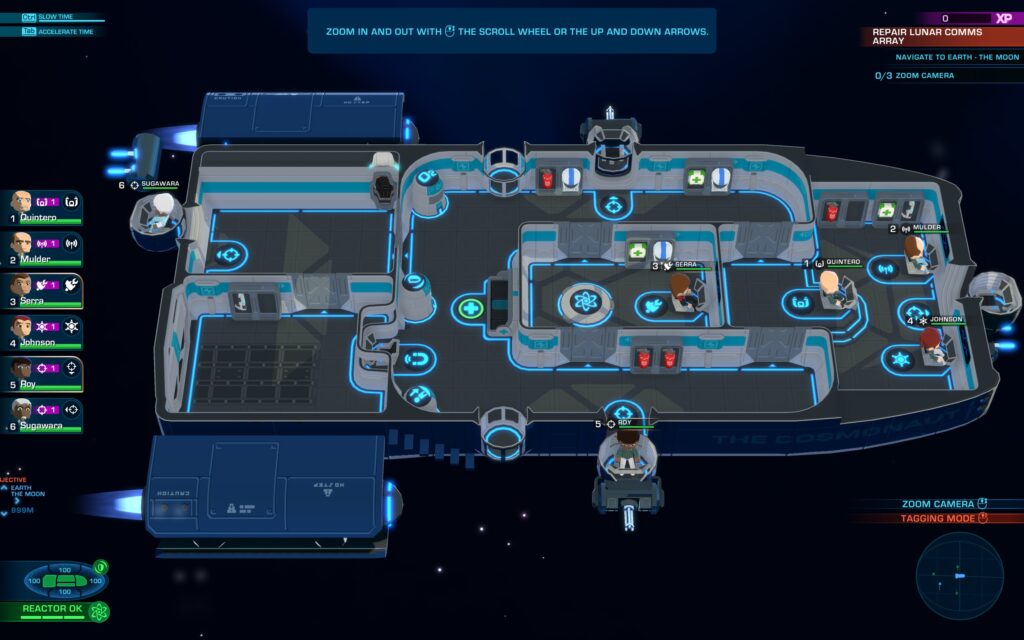
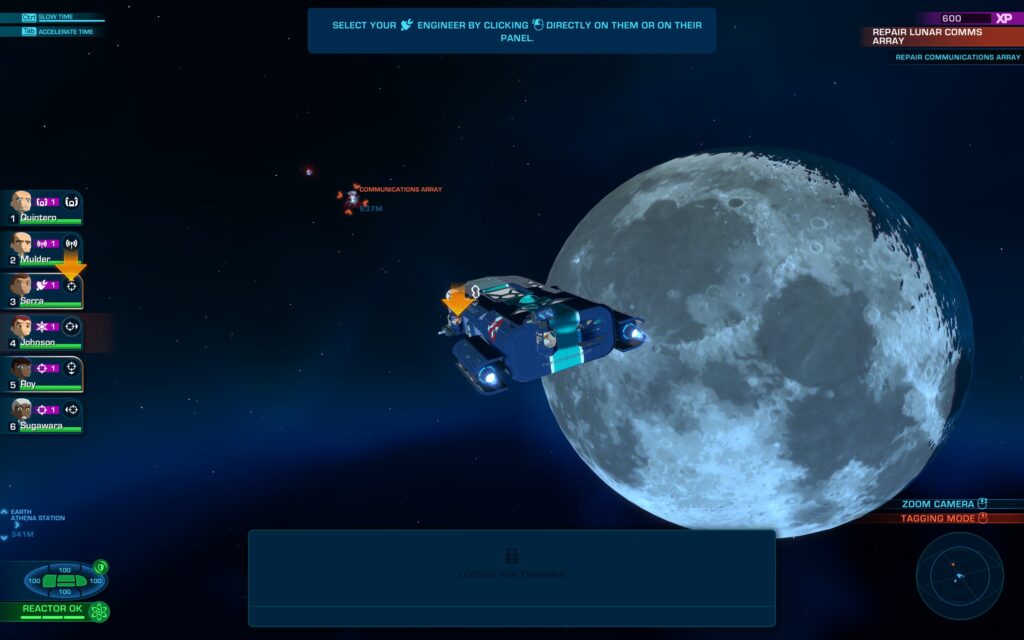
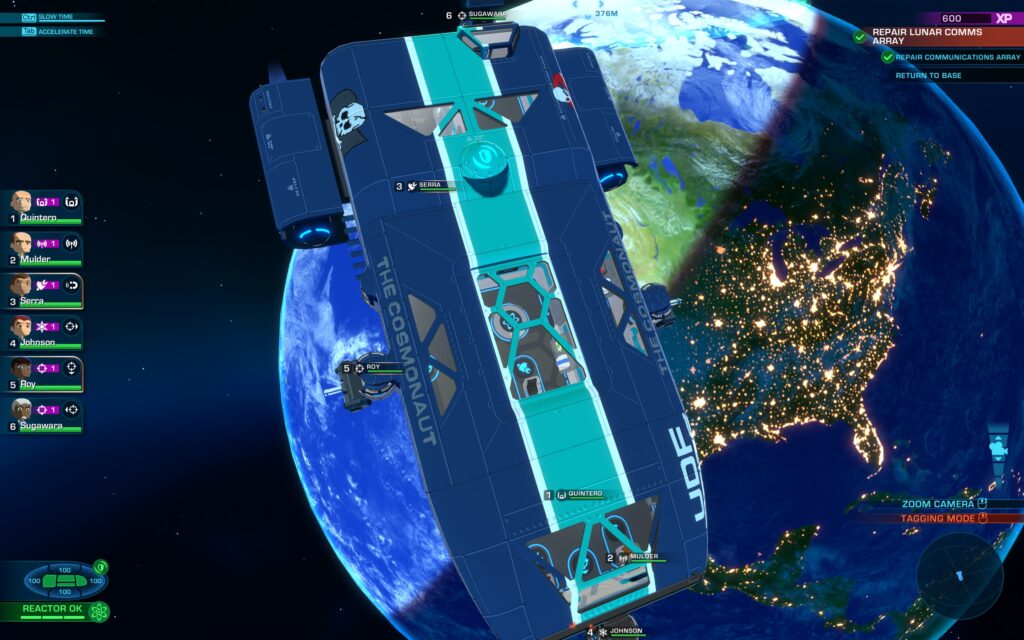
Space Crew is a strategy game where you control the crew of a space ship fighting the invading alien Phasmids. While this game is easily compared to FTL, with various ships systems that need to be powered and maintained during and after battle, it plays completely different.
Unlike FTL, Space Crew is not a rogue-lite. It maintains that feel a little, giving each game only a single auto-save, but losing your ship/crew results in them being replaced so you can continue the campaign. It is also, while cartoonish in style, set in a fully 3D rendered universe rather than a pixel-art based one.
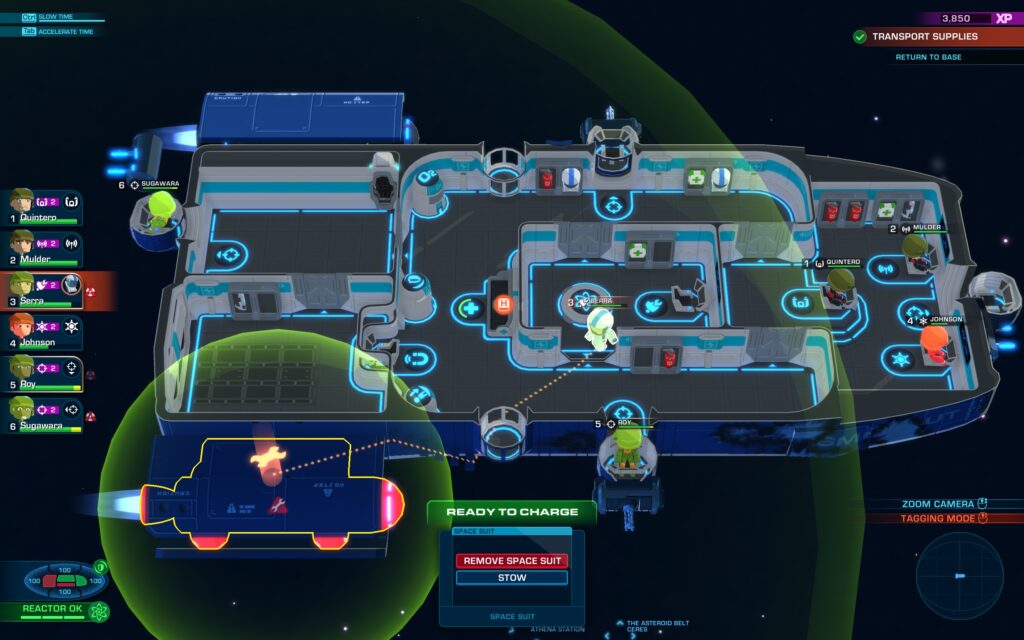
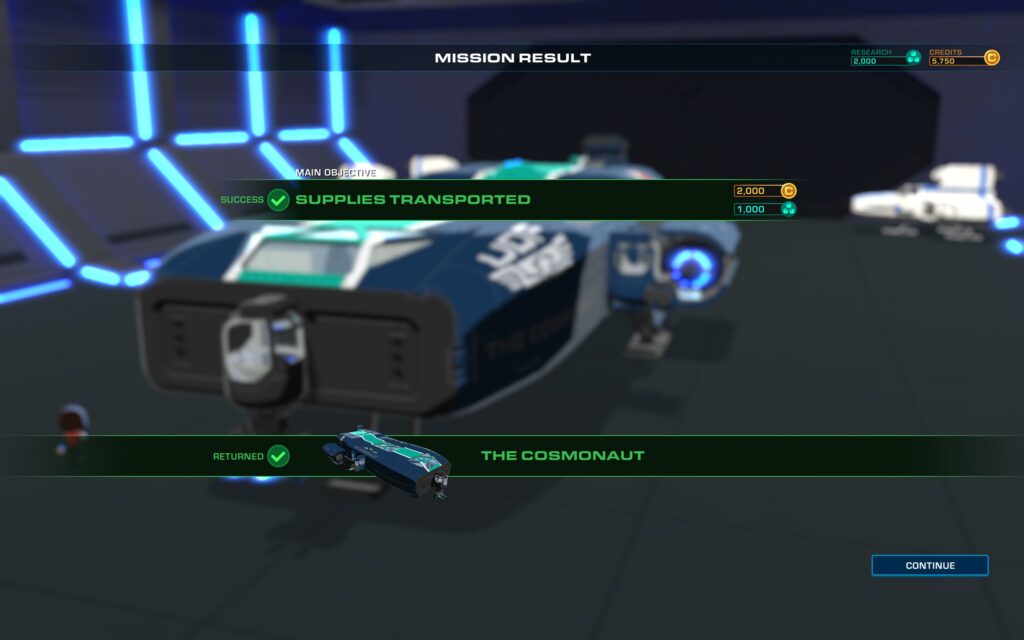
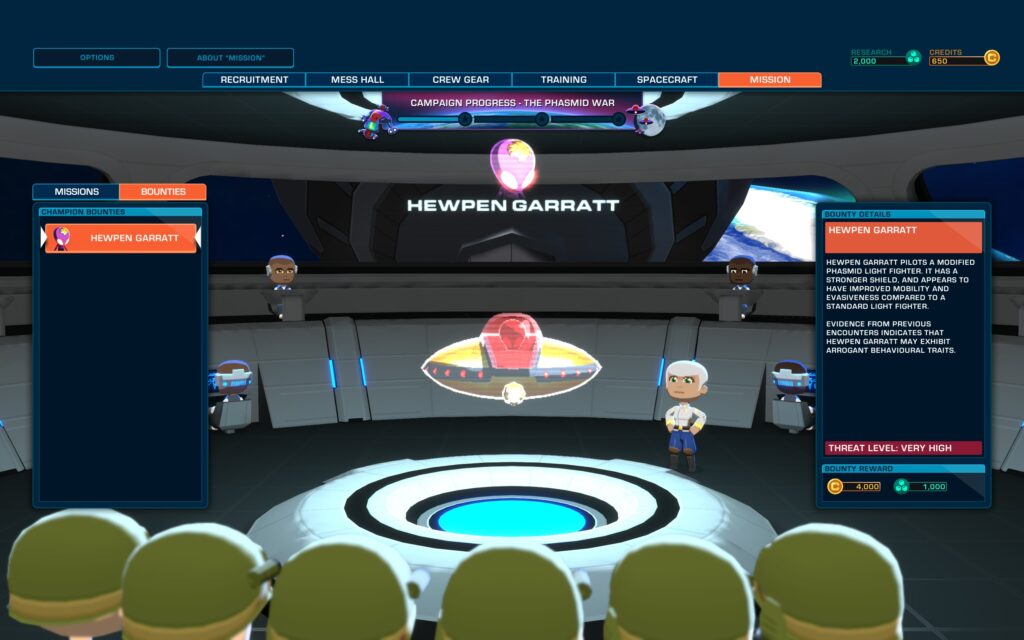
The graphics, though simple, look fantastic, and all the elements work together well. Seeing your ship swarmed by enemy fighters with the rings of Saturn or the asteroid belt as a backdrop leads to some inspired visuals.
The sound design complements the visuals well. Each weapon has its own sound, and you will hear the difference between lasers bouncing off a shield, and bullets bouncing off the hull of a ship. Sometimes you can tell what’s happening in a battle purely based on the sounds you are hearing.
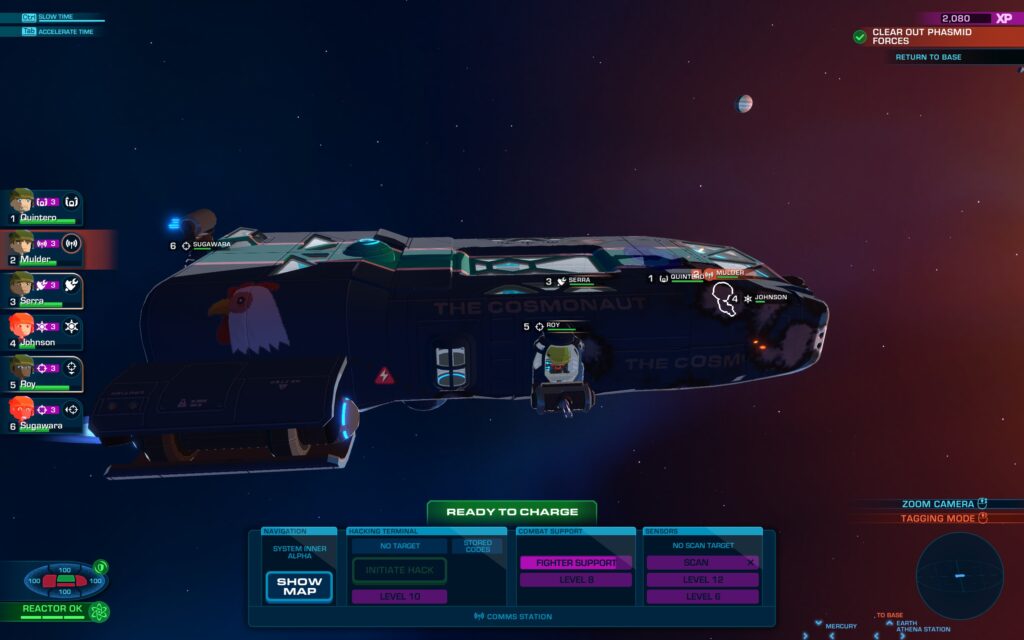

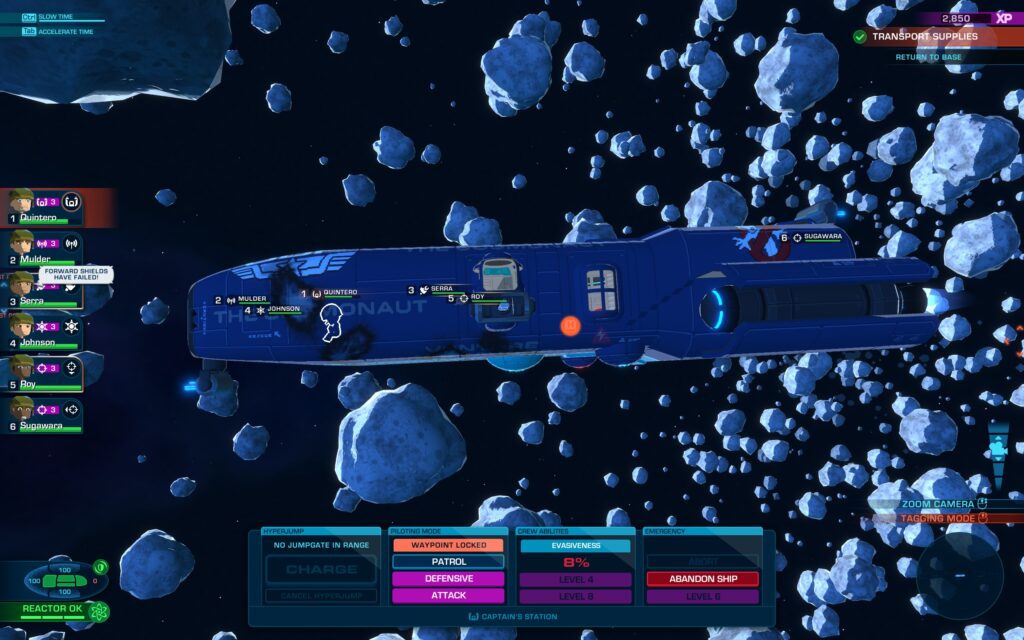
Similar to FTL, you manage your power distribution over various systems – Shields, Weapons, Engines, and Gravity. Power distribution is the core strategy in this game and can affect everything that happens in battle. This is where the comparison ends, as the rest of the games mechanics are unique to Space Crew.
You control a crew of 6, each with their own class, from a Captain who pilots the ship, an Engineer that distributes power and maintains the ship, to Gunners who man the ships weapons. A Comms Officer, skilled in hacking and scanning, as well as a Security Officer, who defends the ship from invaders, round out the crew.
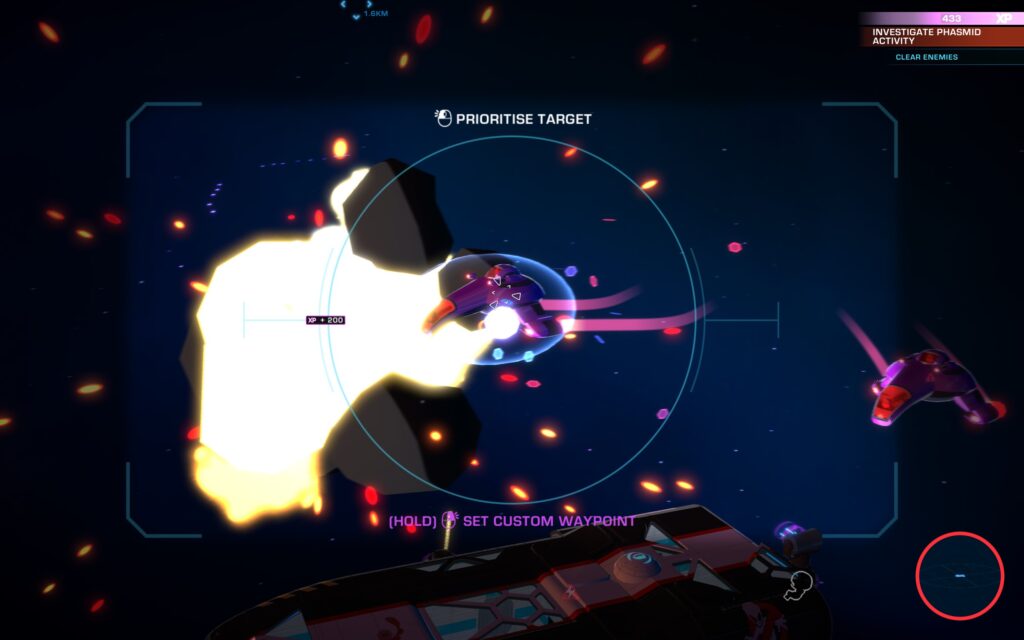
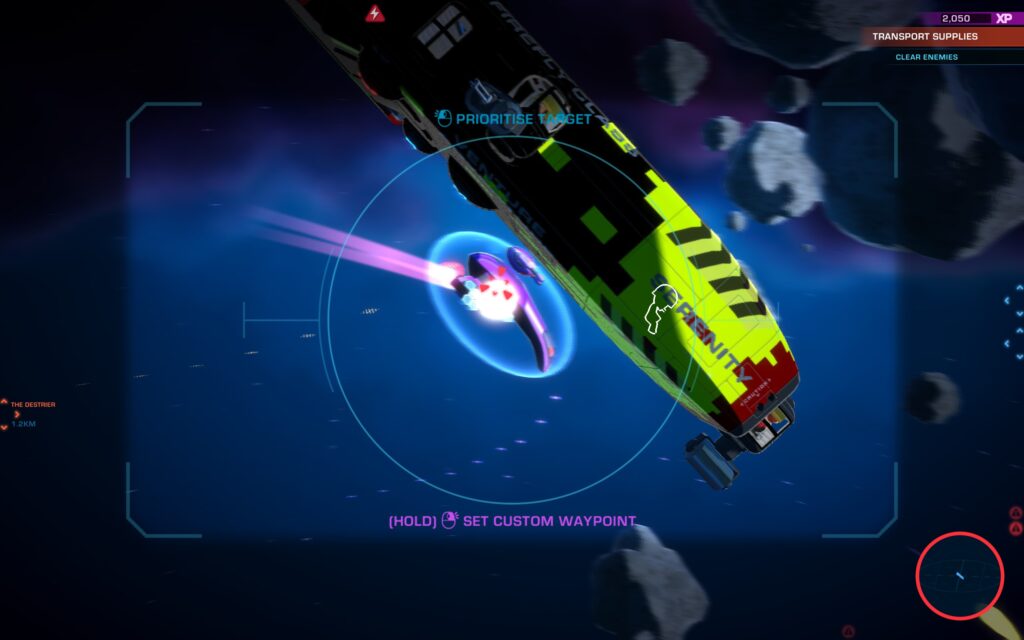
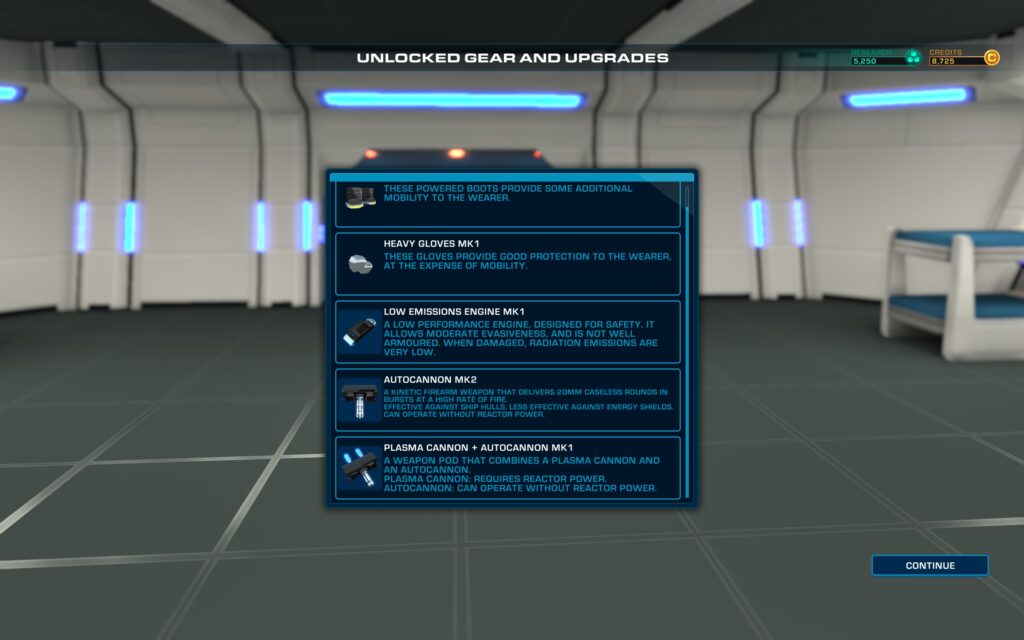
Each class comes with its own special abilities, allowing you to turn the tide of battle. For example, a Captain can use Evasive Maneuvers to avoid enemy attacks, Gunners can Focus Fire ensuring they hit their mark, or Engineers could boost power generation to give more power to all systems.
As your crew gains levels and new abilities, the game tells you exactly what each ability does. This means that you can easily figure out how to use a new ability in your next mission, without the need for extra tutorials or game manuals.
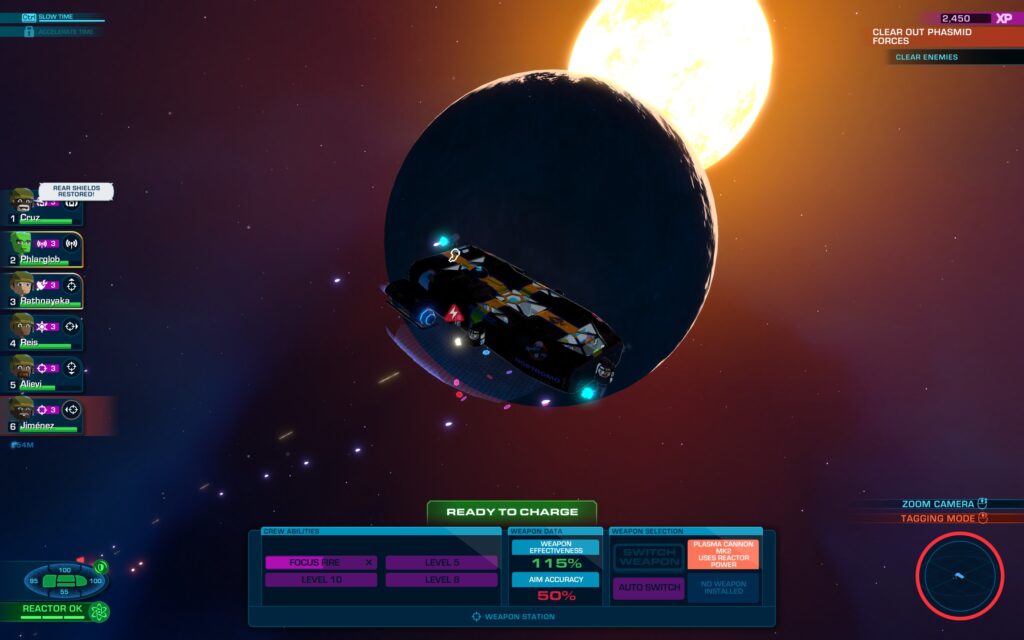
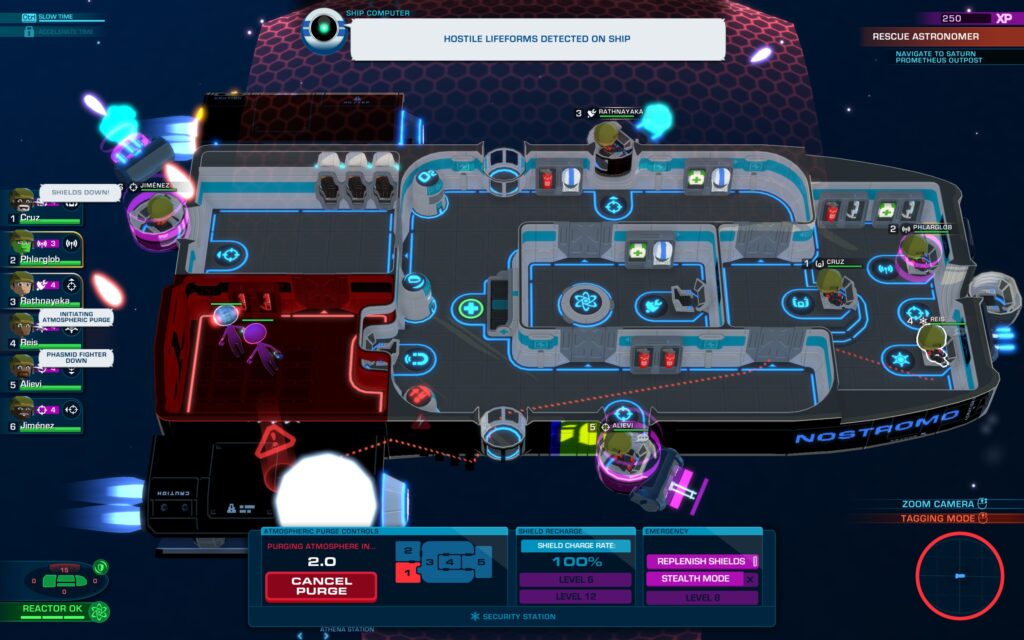
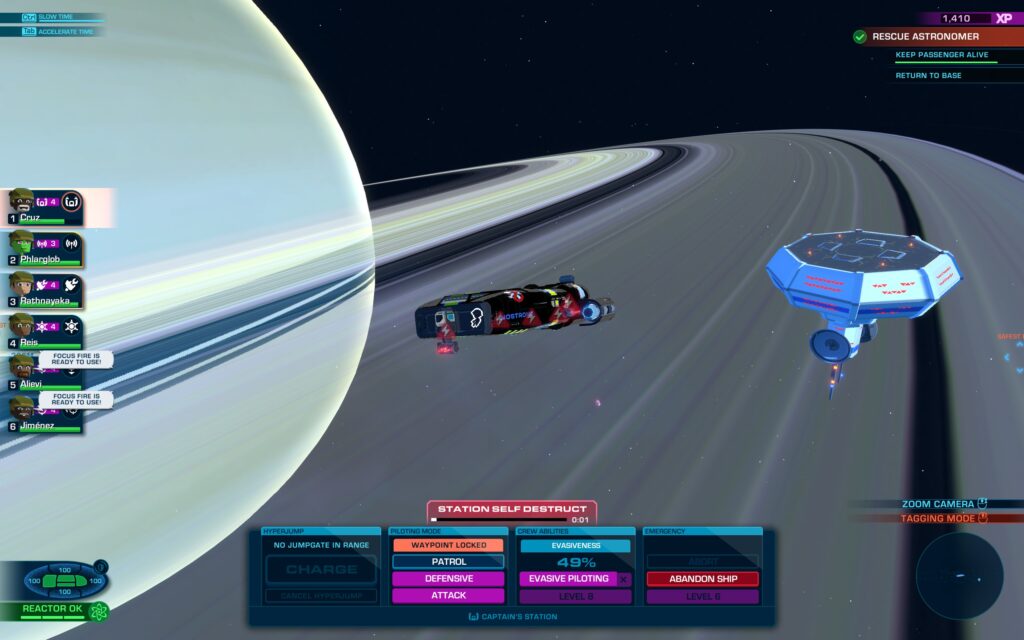
You start in Athena Station, the military base near Earth, and you set out in various missions to progress through the game. Missions range from escorting supply transports, clearing out space stations of aliens, or just hunting and destroying Phasmid ships.
Missions are randomly generated and rated based on their Risk. Low risk missions will be easier and you will face less resistance. Naturally higher risk missions will give you overwhelming forces to fight and may even wipe out your entire crew. A good strategy is to start with lower risk missions to gain experience, credits and research before taking on the more difficult missions.
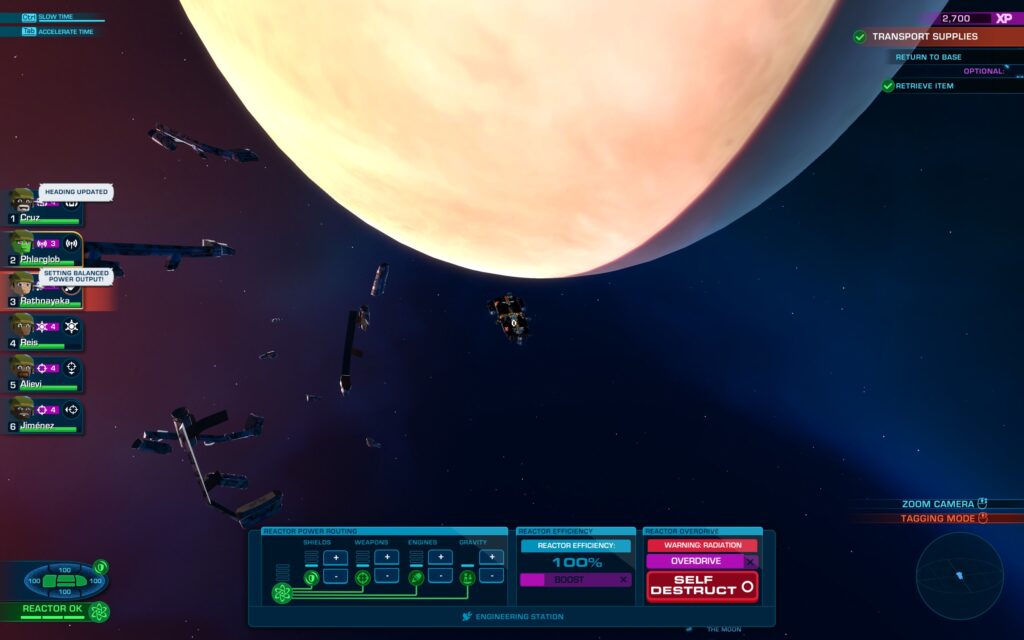
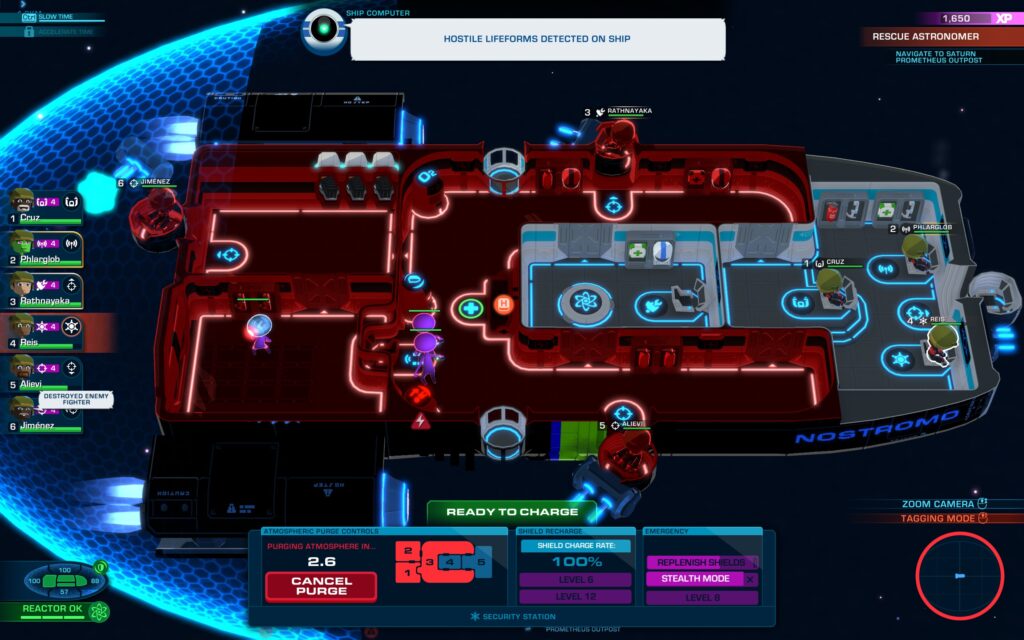
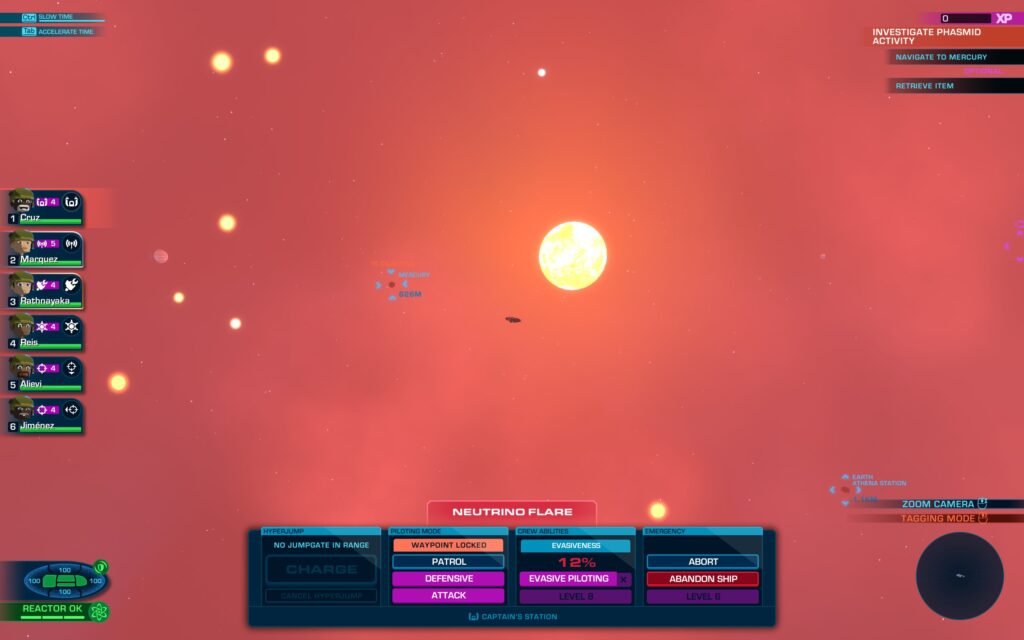
Combat in the game is fast-paced and can get very intense. You have to ensure you have someone at the Comms Station to scan for aliens, and you have four gun emplacements that can be filled by any crew members. You have to “tag” ships before your crew will attack them, but once they do they will be targeted automatically.
The tagging system is one of the clunkier controls in the game. You use the middle-mouse button to go into “tag mode”, then you tag a target. If you target a location, the ship moves towards that location. If you target an enemy ship, your crew will start firing on that ship.
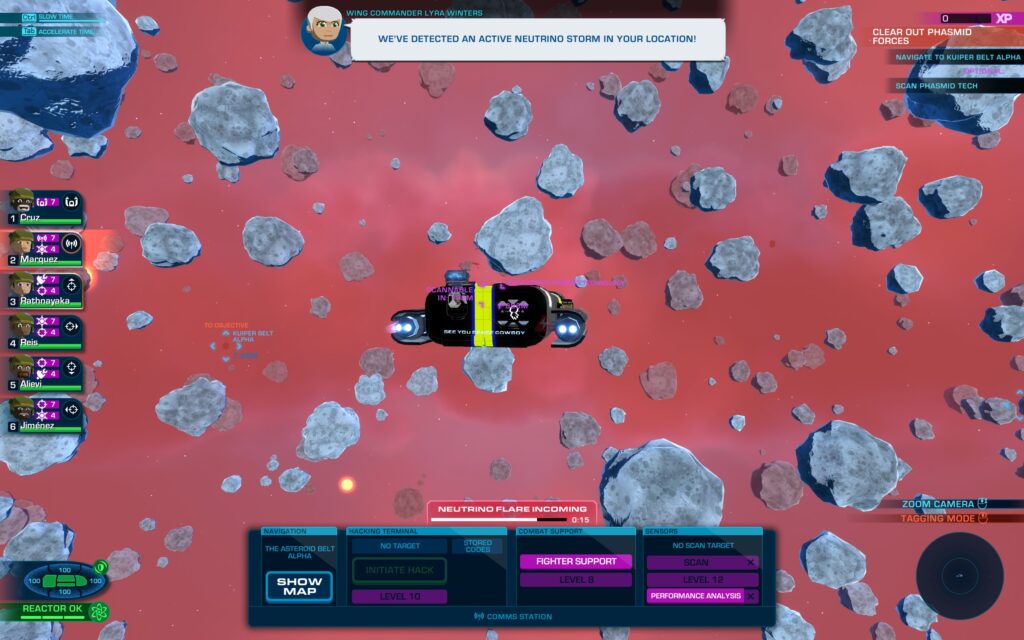
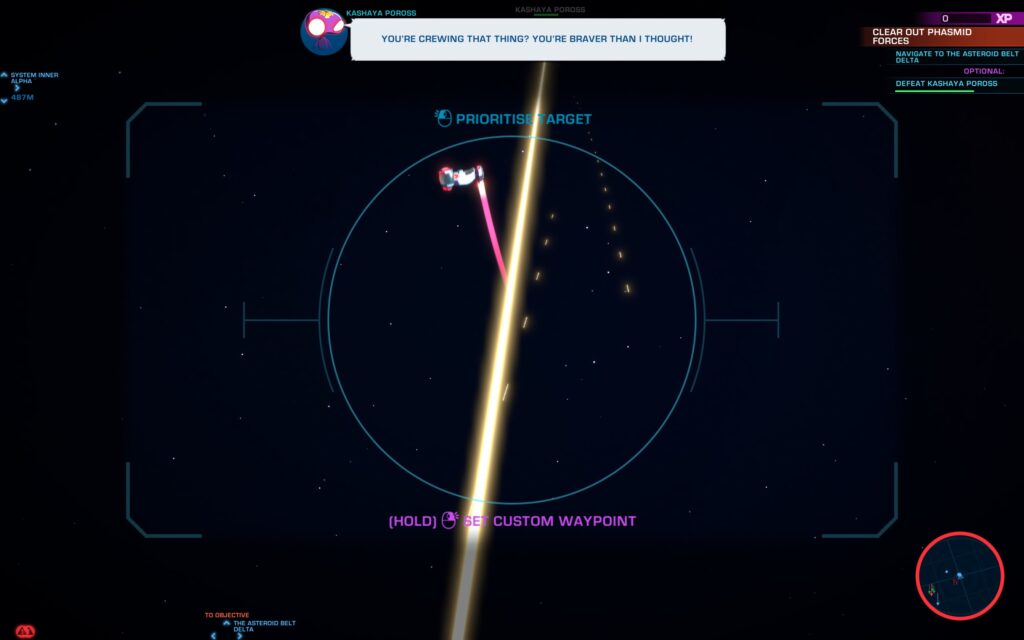
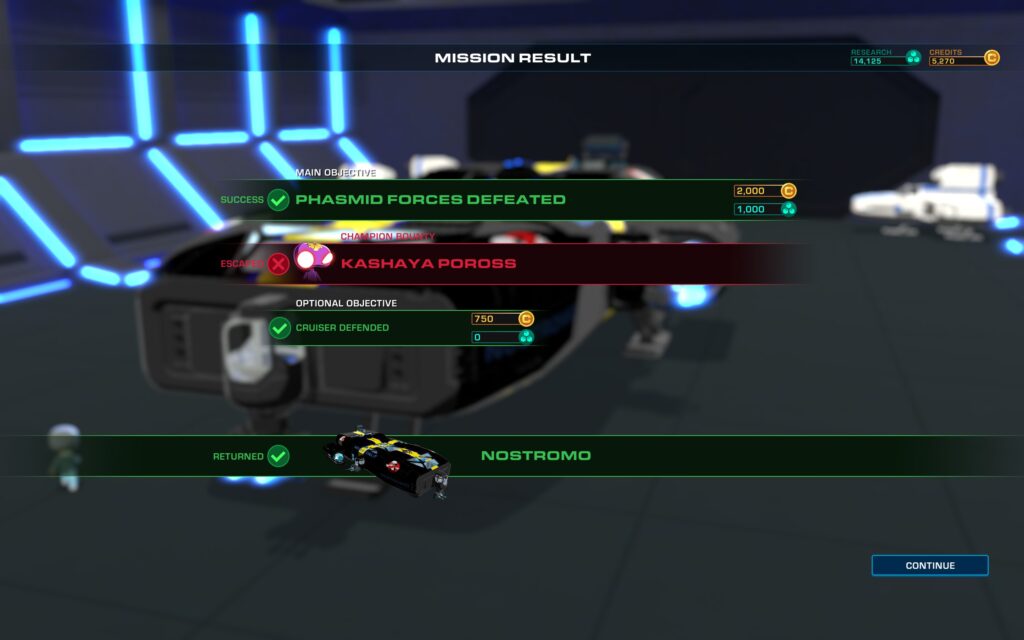
It works, but given the camera angles are often blocked by the ship itself it can be tricky to tag the right object. You may also find yourself accidentally targeting a location in combat, meaning your pilot is no longer using defensive maneuvers like you thought they were. While not the best control scheme, it becomes less of a problem as you get used to it.
In addition, you will need to ensure things are going well inside the ship. If systems get damaged you will need to send a crew member to repair them, temporarily losing one of your weapons. Parts of the ship (or the crew) may go on fire, and you’ll have to put them out. Not to mention aliens might board the ship and try to damage it from the inside.
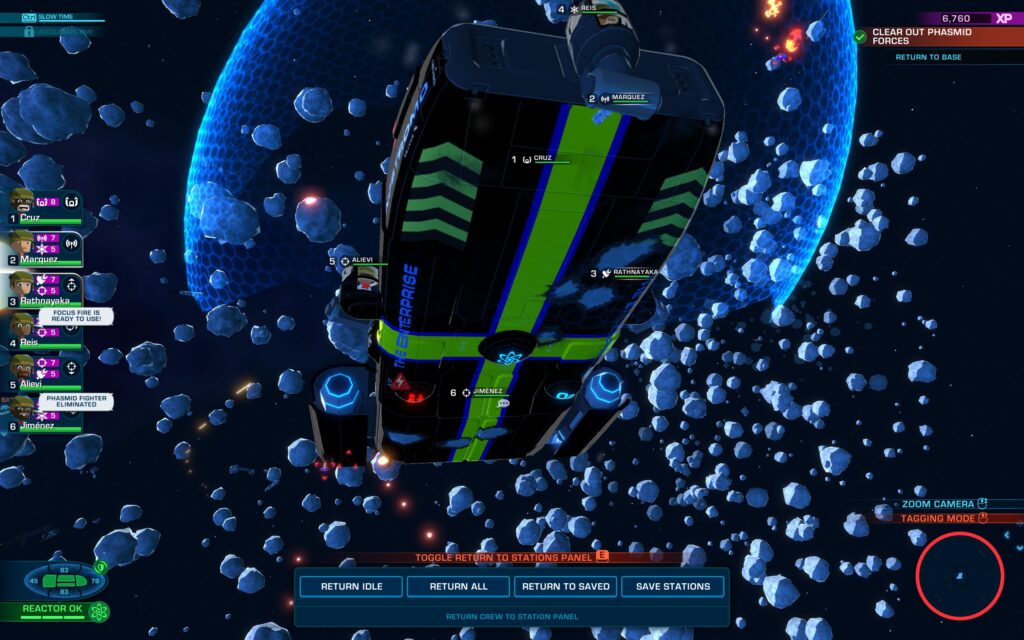
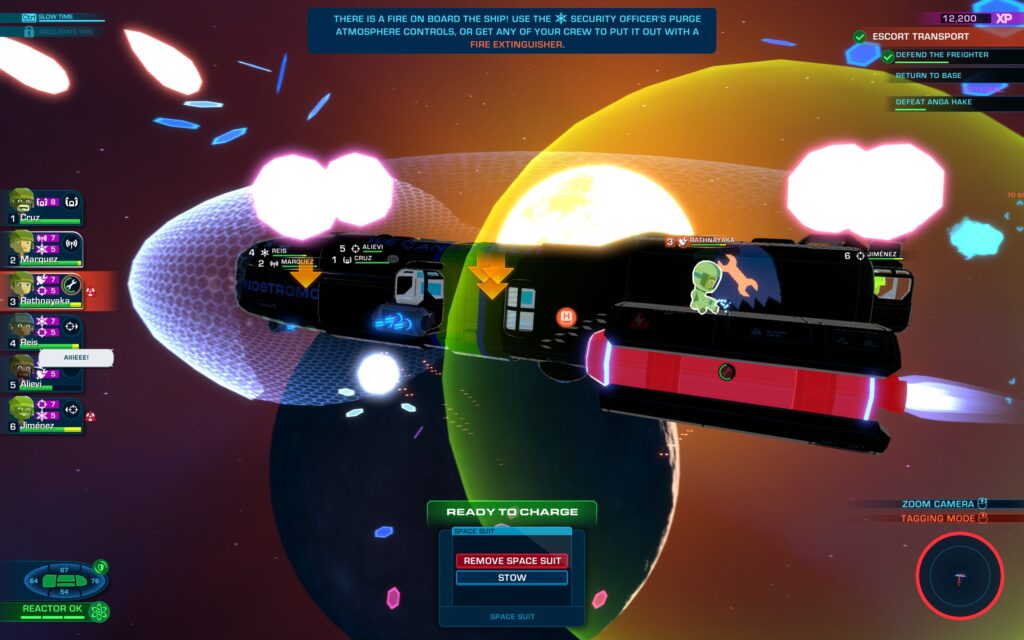
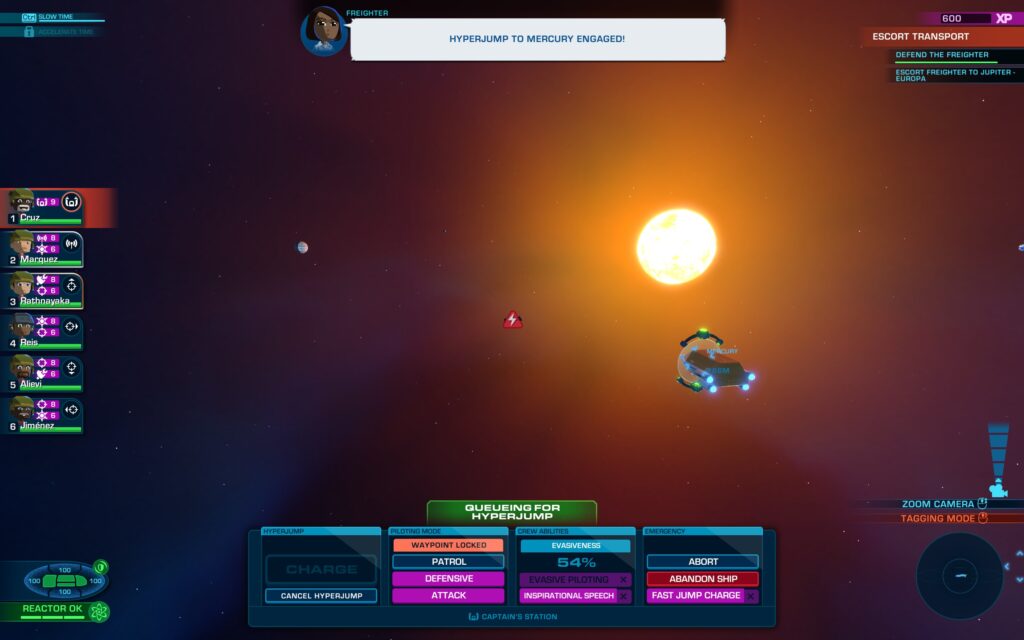
I love all the different things that can happen during a battle and how they lead to emergent situations. I got so used to purging aliens out of the airlock, I accidentally sent someone I was meant to rescue out with them. Another time I didn’t realise my O2 supply had been damaged, so after purging half my crew suffocated. This game keeps you on your toes, forcing you to pay attention to all the details.
Using crew skills can be key to victory in many fights. Using your Comms Officer to summon fighters can turn the tide of battle, or setting your gunners to Focus Fire at the right moment can lead to the mass destruction of enemy forces.
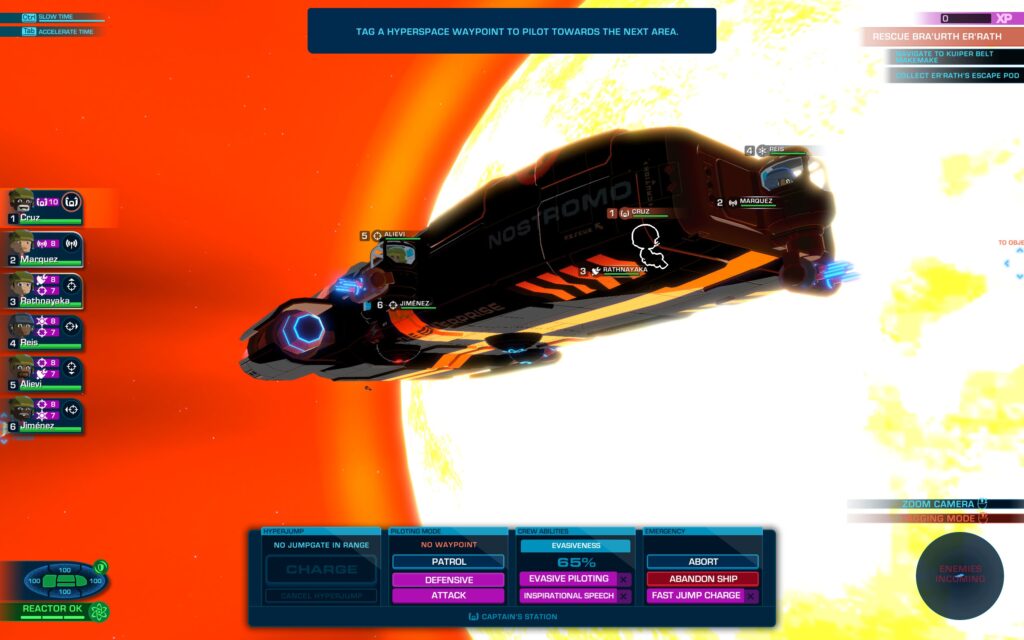
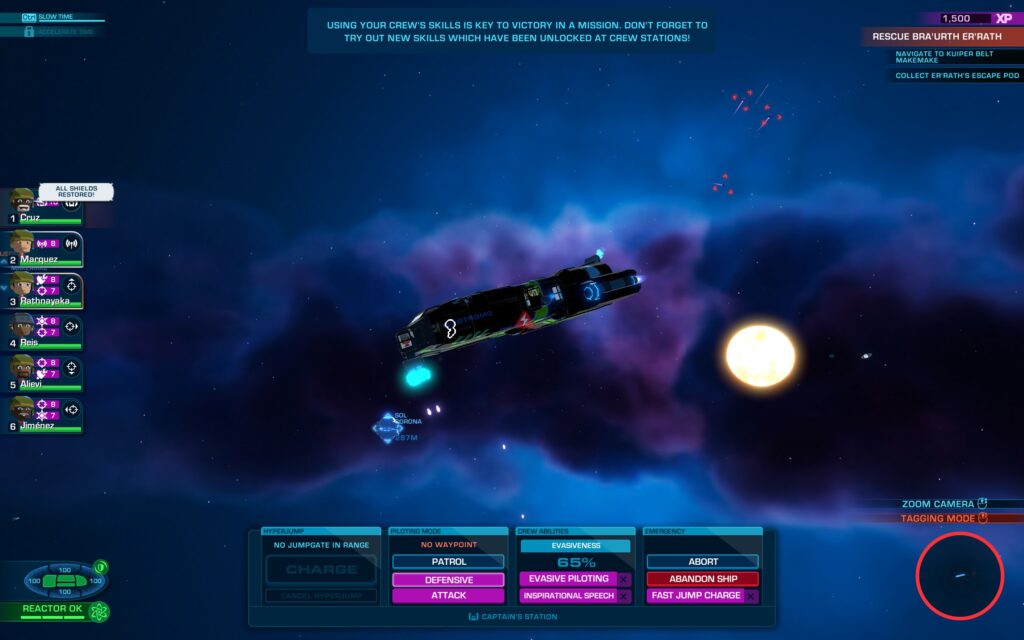
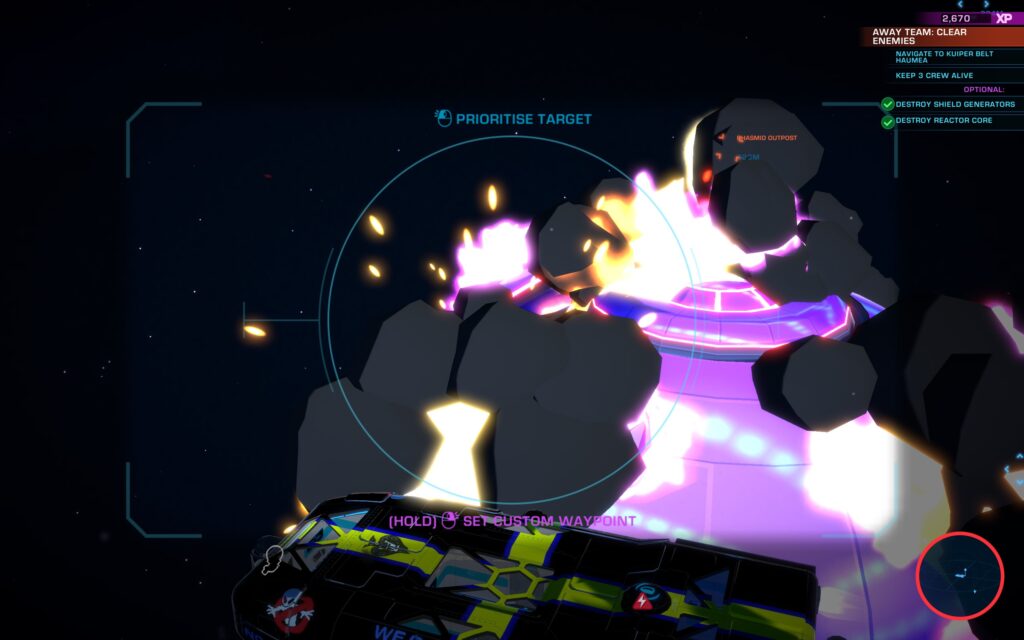
Once a mission is over you gain Credits, allowing you to buy new equipment and ship upgrades, and you gain Research giving you access to better equipment and upgrades. Your crew will also gain Experience allowing them to level up and gain new abilities.
This completes the main gameplay loop. You upgrade your ship, buy new equipment, then choose your next mission. When you feel brave enough you can play the “High Risk” campaign mission to start advancing in the campaign.
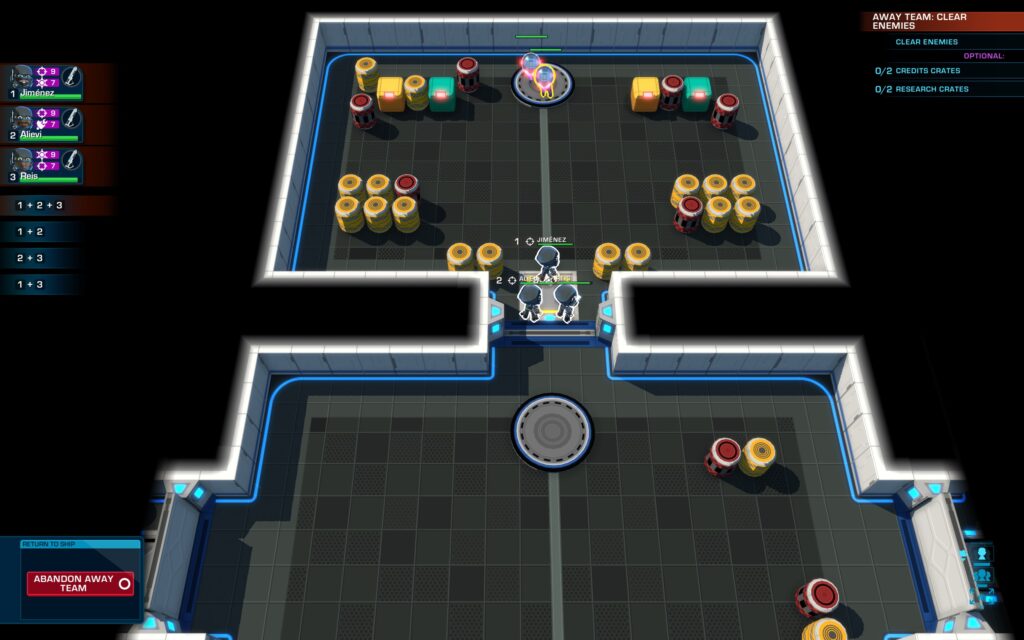
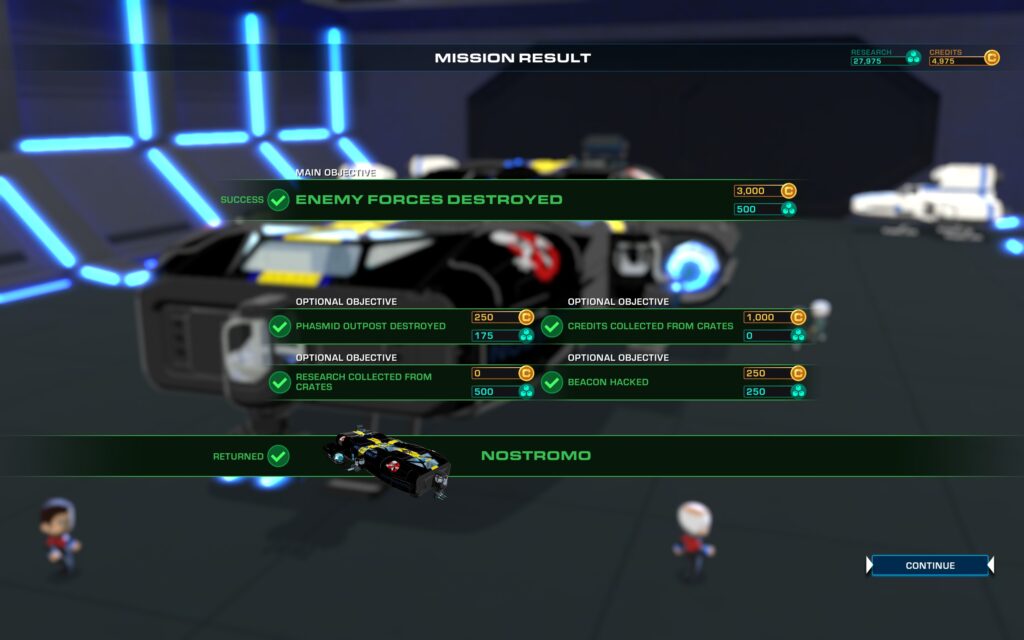
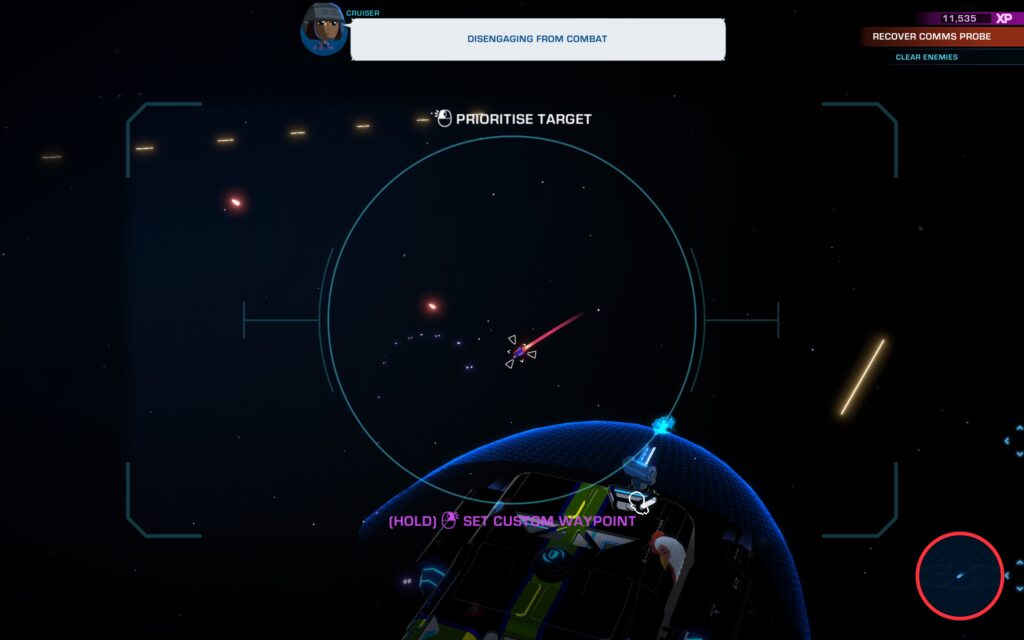
Overall, Space Crew is a fun strategy game with complex situations emerging from simple mechanics. While it does have some clunky controls, overlooking that will reward you with fast-paced challenging space battles that make every victory feel earned.



